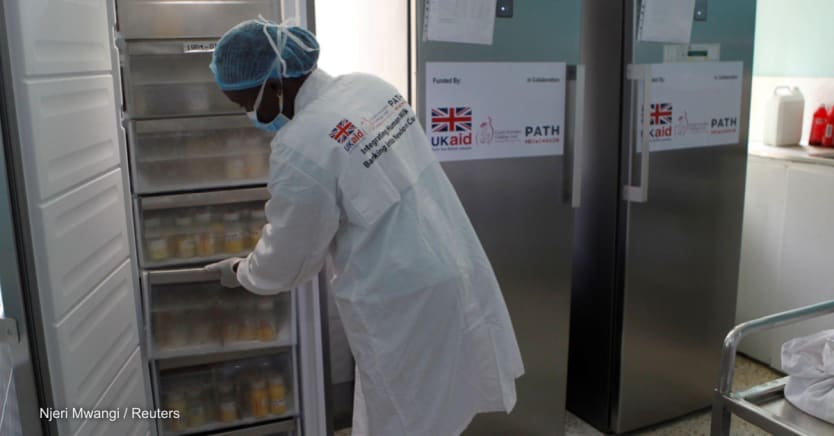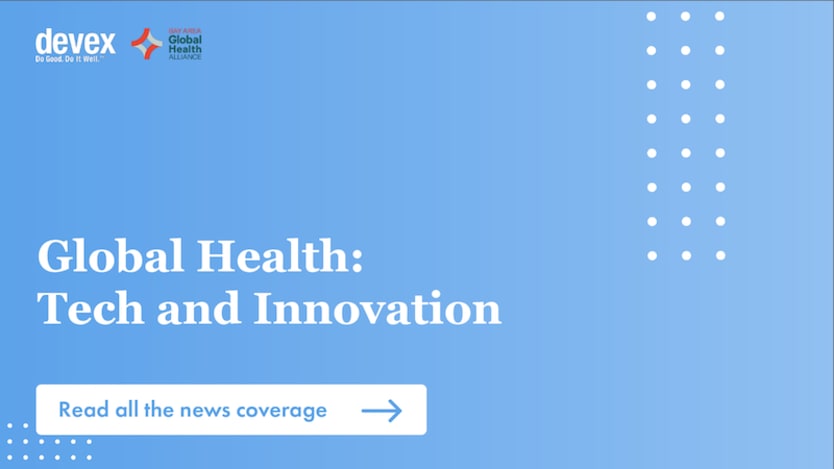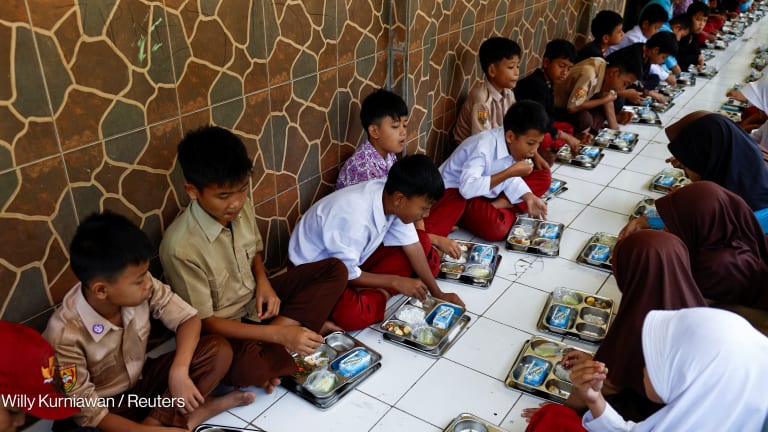
The COVID-19 pandemic presented unprecedented challenges for the global milk banking movement, driven in part by early uncertainty over whether the coronavirus could be transmitted through breast milk.
Human milk banks saw increased demand and decreased donations, due to reasons ranging from lockdowns to some women’s fears of leaving their houses to donate. Challenges continue in places such as India, where one factor driving the demand for donor milk is new mothers dying of the coronavirus, experts told Devex.
But COVID-19 also boosted collaboration between milk banks from around the world that previously worked in silos, despite their many shared challenges.
In the early days of the pandemic, dozens of milk banks and associations came together in a WhatsApp group to help each other navigate the rapidly changing information landscape. COVID-19 created major setbacks on progress around initiating early breastfeeding, keeping mothers and babies together after delivery, and ensuring donor milk is available when needed. That made a virtual collaborative network more critical than ever.
Now these groups are working to formalize the Global Alliance of Milk Banks and Associations, or GAMBA, which aims to bring together milk banks from across the globe to share information, discuss evidence, and develop consensus around best practices in milk banking in the context of the pandemic and beyond.
Most of GAMBA’s members are milk banks and associations, though several NGOs are also involved, including the Seattle-based global health organization PATH and the global nutrition initiative Alive & Thrive.
“The entire field needs innovations [including] developing guidance and standards, advocacy, generating evidence.”
— Kiersten Israel-Ballard, human milk initiative lead, PATHEvidence increasingly shows that providing donor breast milk to premature, vulnerable, or low birth weight infants who cannot access their mothers’ milk leads to better outcomes compared with formula. That often comes from milk banks, which recruit donors, collect their milk, and process, screen, and store it before distributing it to infants in need — with the goal of providing a bridge to breastfeeding.
There is inequity in the milk banking system, particularly in low- and middle-income countries and regions such as sub-Saharan Africa, where demand outweighs supply and newborns are 10 times more likely to die compared with infants in high-income countries.
PATH has worked on technology solutions to solve these inequities. For example, it has developed an app to guide flash-heat pasteurization, a simple method of manually killing bacteria in breast milk.
More recently, the NGO has been developing a digital tool to support data-driven decision-making related to lactation and breastfeeding, infant feeding and diet, and the use of donor milk.
But over time, leaders at PATH realized that the barriers to scaling up safe milk banking in low- and middle-income countries extended far beyond technology.
“The entire field needs innovations,” said Kiersten Israel-Ballard, who leads the human milk initiative at PATH, adding that this includes “developing guidance and standards, advocacy, generating evidence.”
PATH has been involved in efforts to share best practices in milk banking from place to place. For example, it organized a learning exchange in 2015 that brought technical experts from India to Brazil. The exchange was one factor in the eventual formation of an association for India’s milk banks.
But COVID-19 threatened to “pull the rug out from human milk banking,” said Gillian Weaver, a co-founder of the Human Milk Foundation, a U.K.-based organization that works to broaden access to donor milk both domestically and globally.
Weaver and peers in the milk banking movement had previously discussed the idea for a network to connect milk foundations worldwide. So when the pandemic hit, she worked with fellow HMF co-founder Natalie Shenker to set up the GAMBA WhatsApp group.
GAMBA has helped groups navigate best practices during the pandemic. Early on, for example, conflicting guidance emerged over whether mothers and newborns should be kept together or separated at the hospital and whether COVID-19 could be passed through breast milk. Later, questions arose as to whether breastfeeding women should get the vaccine.
Opinion: What the makers of breast milk substitutes are doing on social media — and why it matters
As the World Health Assembly reconvenes this week, this op-ed calls for action on the digital marketing of breast milk substitutes — particularly during the time of COVID-19.
Experts who joined GAMBA included João Aprígio Guerra de Almeida, who leads Brazil’s milk bank network and has provided advice to other countries in the region through the Iberoamerican Network of Human-Milk Banks. Brazil, the global leader in breast milk banking, is home to more than 220 of over 600 human milk banks in the world.
But even Brazil’s milk bank network encountered low supplies of donor milk last year, prompting it to launch a media campaign to encourage donors and educate them on the safest ways to express and store excess milk.
GAMBA members recently voted to evolve from a WhatsApp group into a formal organization. While they will have to raise funds to set up a nonprofit entity, they said they want to maintain the collaborative approach, stay nimble, and avoid too much bureaucracy.
Still, Weaver and Shenker said challenges remain for milk banking. For example, there are no globally agreed-upon guidelines for human milk banks, which Shenker highlighted in a recent call to action in The Lancet. While GAMBA helps address the lack of mechanisms for rapid communication between these organizations, milk banking systems must be strengthened to ensure the safe provision of donor milk globally.
In the meantime, GAMBA can help milk banks respond to the ongoing pandemic — and prepare for the next one.
“We are consolidating what we’ve learned from COVID-19 so for the next pandemic we can respond rapidly and systematically and not with that rather overwhelming sense of panic,” Shenker said.
This coverage, presented by the Bay Area Global Health Alliance, explores the intersection between technology, innovation, and health. How are tech, innovation, and cross-sector partnerships being leveraged to accelerate equitable access to health care?





